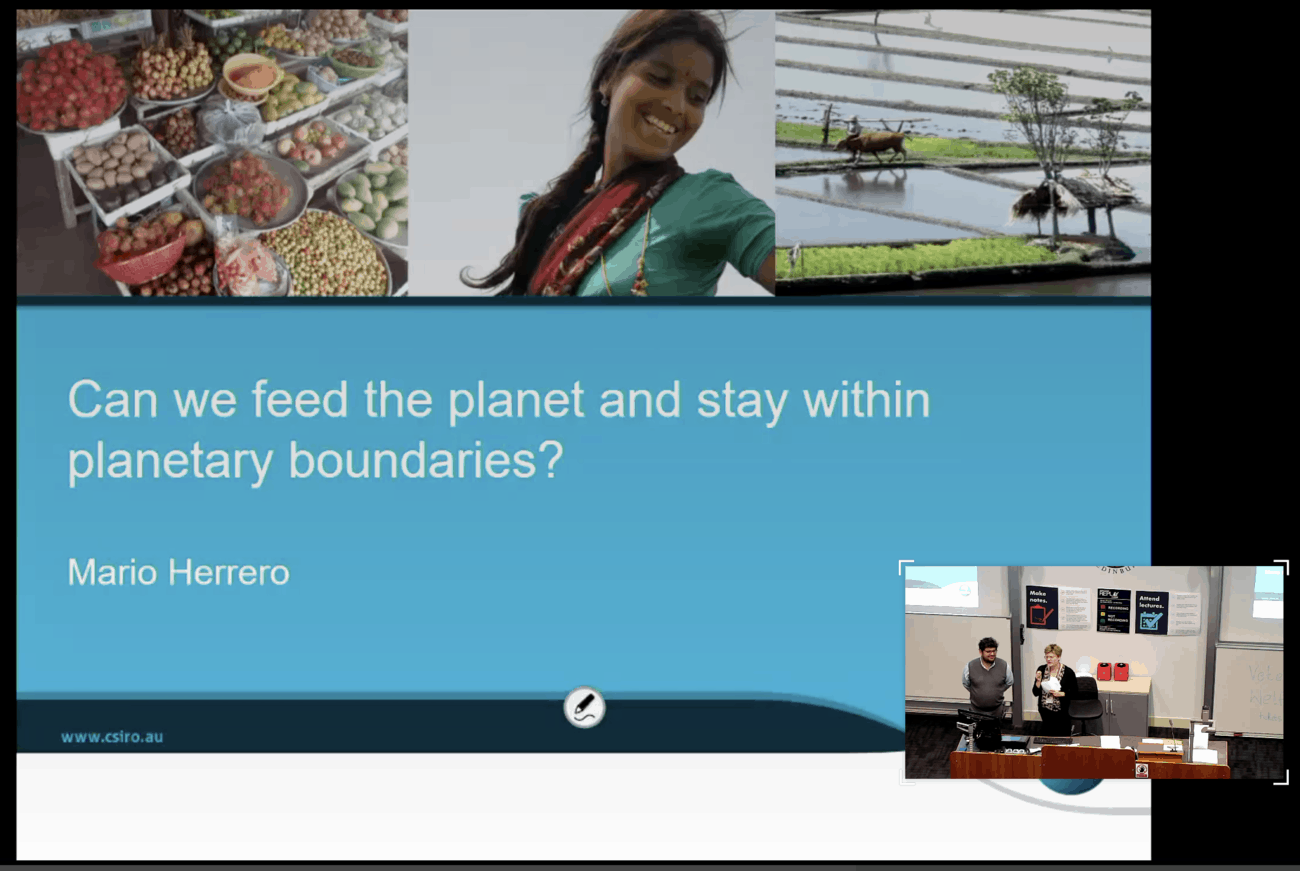Enlarging on the EAT-Lancet planetary diet report—A fresh look by CSIRO’s Mario Herrero, one of the authors
- From
-
Published on
02.10.19
- Impact Area

Mario Herrero, a scientist formerly with the International Livestock Research Institute (ILRI) and now serving as chief research scientist of agriculture and food at Australia’s Commonwealth, Scientific and Industrial Research Organisation (CSIRO), recently gave a seminar at the University of Edinburgh’s Royal (Dick) School of Veterinary Studies. The seminar was organized by Supporting Evidence Based Interventions (SEBI) in collaboration with the Global Academy of Agriculture and Food Security, both hosted by the Royal (Dick) School of Veterinary Studies.
The title of Herrero’s 19 Sep 2019 seminar was ‘Can we feed the planet and stay within planetary boundaries’. He focused on the EAT-Lancet Report on healthy diets (Commission Food in The Anthropocene: The EAT-Lancet Commission on Healthy Diets From Sustainable Food Systems, 16 Jan 2019), to which he contributed, along with 36 other experts.
Hererro showed a ‘horrendogram’ (his droll term for a complicated scientific figure) that distills the findings of three scenarios the study made—on what would happen if food production were intensified, if food waste were reduced and if human diets were to shift. With ‘business as usual’ approaches to global food systems, he shows that by 2050 we are bound to ‘transgress all the planetary boundaries’.
If just diets are changed, he says, ‘we only change greenhouse gas emissions. This is important.’
Shifting diets is not the panacea for solving all the other boundaries; it addresses the greenhouse gas boundary only, because we’ll need a lot more fertilizer and we’ll need a lot of additional land to be able to meet the rest of the diets.
What the report does say is fundamental to achieving the EAT-Lancet diets, Herrero reports, is intensifying food systems to increase yields and halving food waste. . . .
Related news
-

Mapping for Resilience: How Spatial Data is Transforming Karamoja Cluster
Ibukun Taiwo02.07.25-
Climate adaptation & mitigation
Pastoral communities in the Karamoja Cluster (a region spanning Kenya, Uganda, South Sudan, and Ethi…
Read more -
-

Building Resilience and Regeneration: The Central Highlands Ecoregion Foodscape (CHEF)
Sehlule Muzata02.07.25-
Climate adaptation & mitigation
At the CGIAR Sustainable Farming Program (SFP), we believe that collaboration is essential for trans…
Read more -
-

KOICA, UPLB, IRRI Partnership Establishes a Genomic Powerhouse to Future-Proof Agriculture
International Rice Research Institute (IRRI)01.07.25-
Food security
LOS BAÑOS, Philippines (26 June 2026) — KOICA, UPLB, and IRRI came together to showcase…
Read more -
